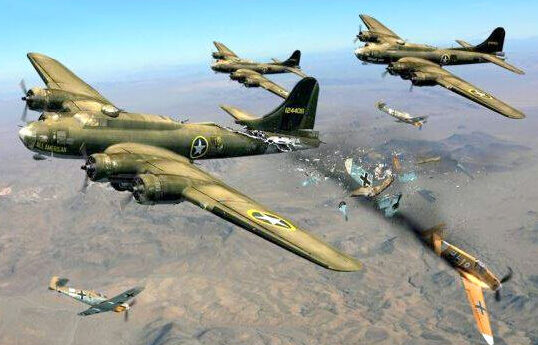
A Messerschmitt pilot, blazing with his guns, aimed his plane at the nose of the All American. The crew on the B-17 Flying Fortress had seconds to respond. The first response came from the nose artillery. Soon after, the main gunner joined him.
The German fighter maneuvered to retreat at the very last moment, but All American artillery had shot him down. The plane fired right above the cockpit just before the B-17’s tail, and then the entire crew shivered with the plane.
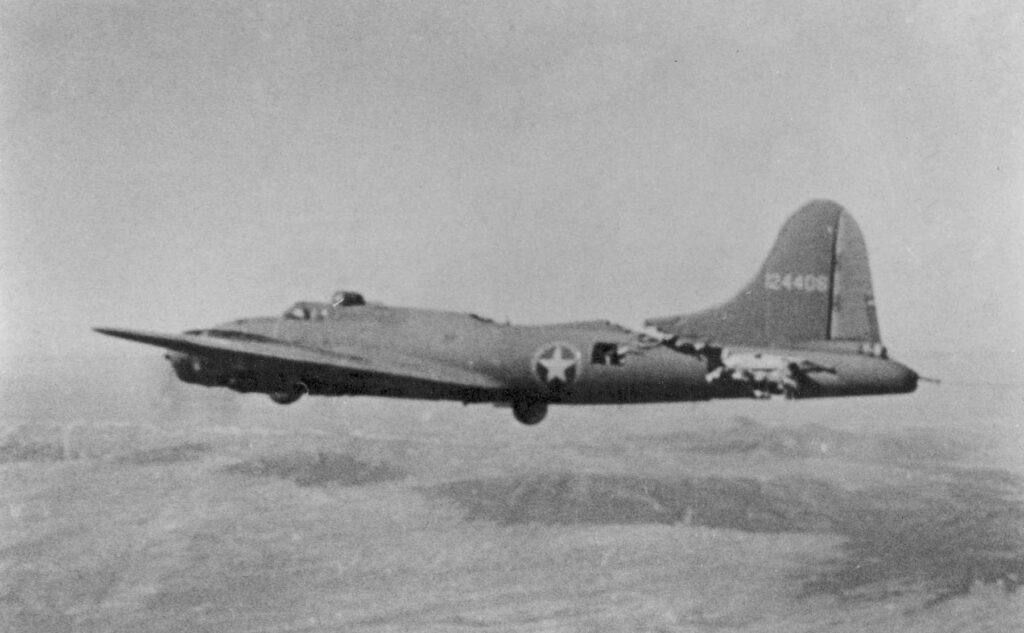
The collision had torn a huge hole in the rear of the fuselage. The left horizontal stabilizer was gone. Shivering from the impact, the badly damaged tail section looked like it could go at any moment.
A quick head count of the stunned crew revealed that, amazingly, nobody had been hurt. Realizing they may only have moments left before their bird fell apart, they leaped into action. They grabbed their parachutes and prepared to bail.
Aware that every mile counted, the pilot kept them on course. They were flying above the Sahara dessert. Inhospitable at the best of times, the territory was bitterly contested.
The mission had begun well. Despite heavy opposition, the formation had made it through waves of fighters and flak to reach their target. The All American had performed its bombing run without incident. As they turned to return to base, a pair of Messerschmitts had attempted to intercept them. But the gunners had kept them at bay, and the fighters had turned back.
Much later, the formation ran into 2 more Messerschmitts. The first sign of them was when they were spotted climbing towards the bombers from 2 miles away. This time, the German fighters pressed the attack. The German planes split up. One of them attacked the formation leader. The other dived straight at the All American.
With gunners from both bombers targeting them, both of the German planes were destroyed. The fighter attacking the lead bomber plunged from the sky trailing a plume of black smoke behind it. The second collided with the All American.
In a sense, the men on the B-17 All American were incredibly lucky. The Messerschmitts came within inches of hitting the cockpit. Instead, the bomber was still relatively intact and able to fly.
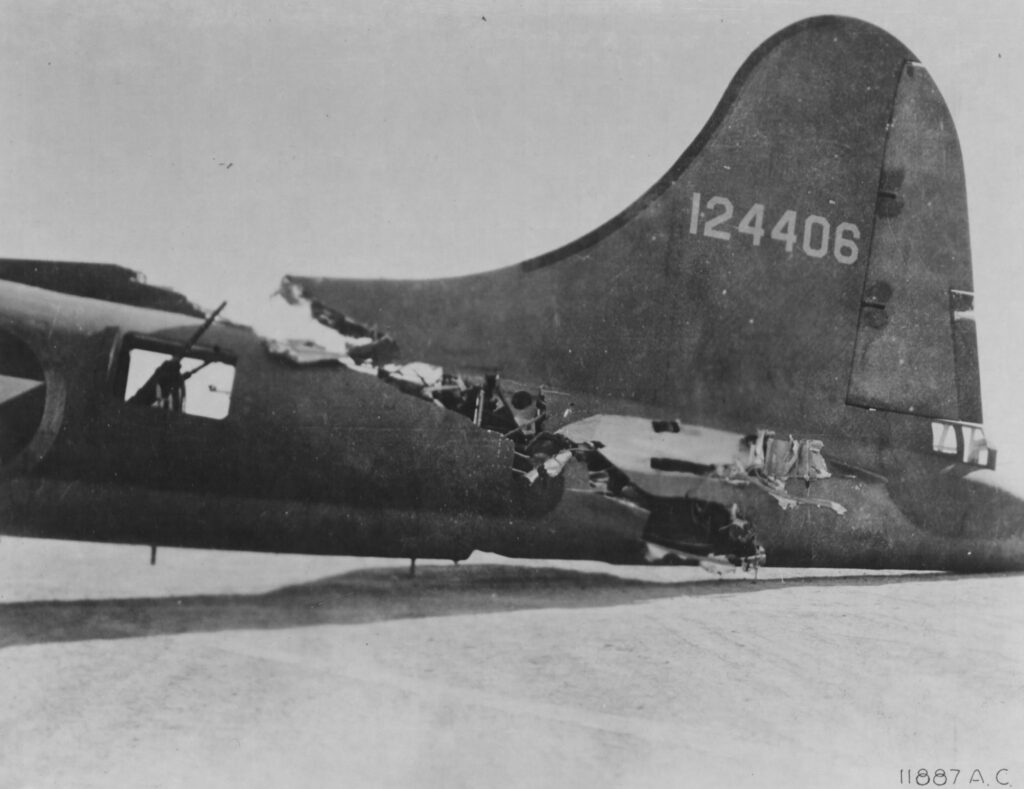
The Messerschmitt passed just over the fuselage of the bomber and its wing struck the aft fuselage. All American lurched upward, but pilot Ken Bragg Jr and Co-pilot G. Boyd Jr found they could use their throttles to manage the pitch.
Flight engineer and top turret gunner T/Sgt Joe James advised that they’d “received some damage to the tail section”.
Bragg instructed his crew to put on their parachutes. The other bombers kept formation on their crippled comrades until they were outside the enemy fighter range, then flew on ahead to base.
Before the other B-17s left, Lieutenant Charles “Cliff” Cutforth navigator of Flying Flit Gun (B-17F-5-BO 41-24412, assigned to the 340th BS), took a now-famous photo of the stricken All American as it flew home over the desert.
The Messerschmitt’s wing had sliced through three-quarters of All American’s aft fuselage, including control cables, hydraulic and oxygen systems. The left-hand horizontal stabiliser was completely gone and the tail section was swinging up to 18 inches out of alignment. Tail gunner Sgt. Sam Sarpolus scrambled forward with his gear.
Not knowing the speed remaining tail section might now stall at (assuming it stayed on), Bragg made several practice approaches at altitude as flew back to base. When they reached Biskra, they fired three emergency flares and orbited the base at 2,000 feet waiting for a green flare indicating the field was clear.
Bragg and Boyd made a wide circle onto a long final approach, easing the aircraft down with its throttles until they felt the main wheels touch the ground. With no hydraulics, there was no way to lower the tailwheel, so as the B17 settled into its three point attitude the tail dragged along the ground. But it still held.
When the aircraft stopped an ambulance rolled up alongside, but Bragg apparently called out ‘No business, Doc.’
Incredibly, no-one had been hurt. Even more incredibly, I believe the entire crew survived the war. And most amazing of all, 41-24406 was repaired and returned to service. She was eventually ‘salvaged’, or converted to parts, in March 1945.
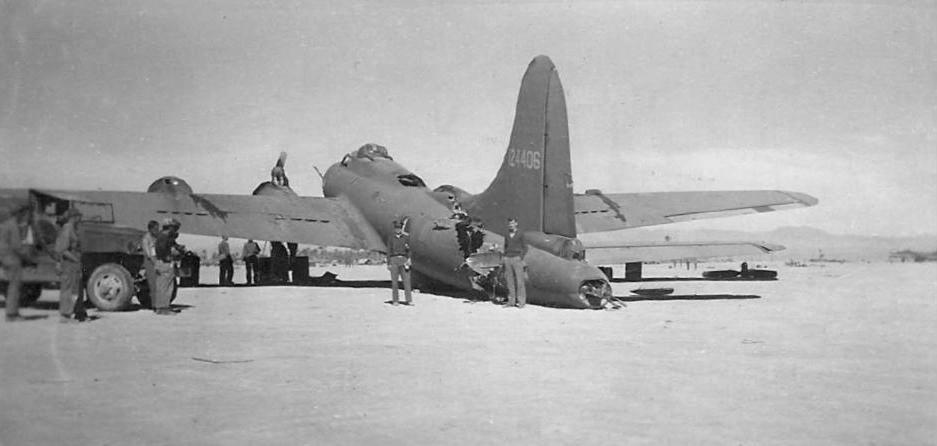

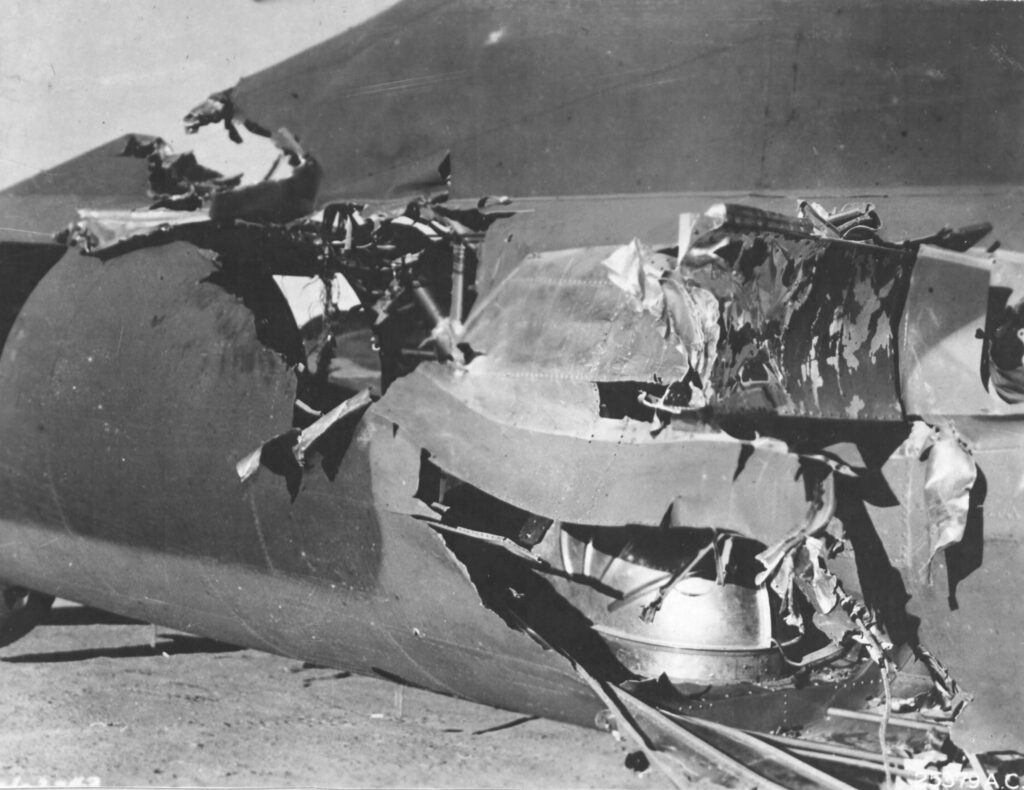
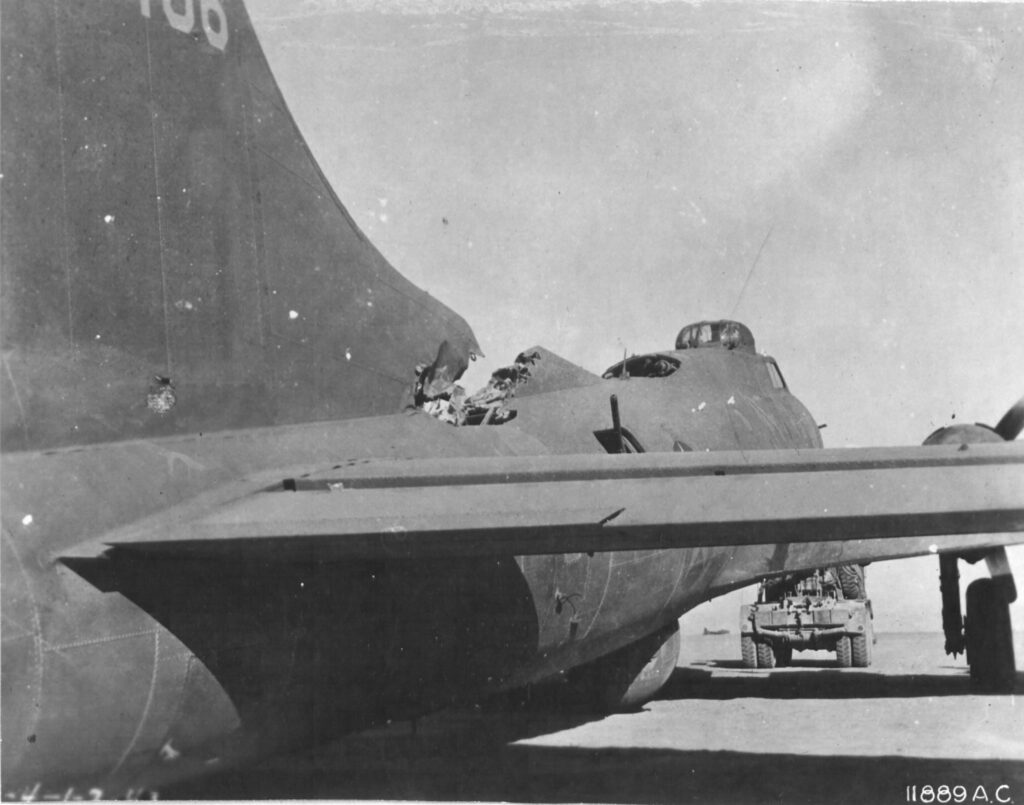
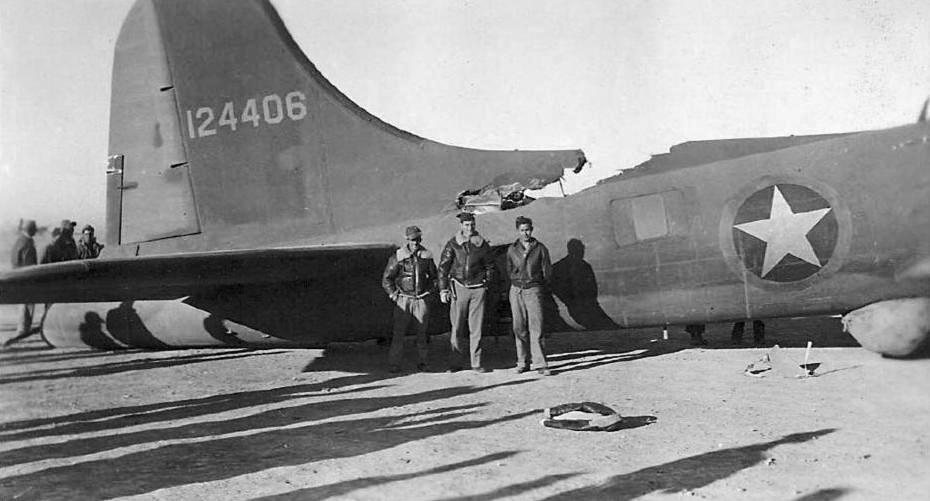
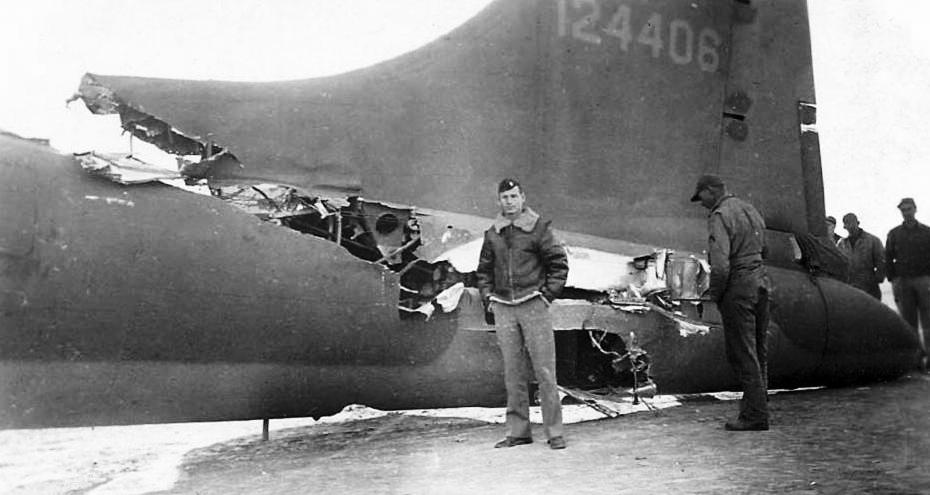

Be the first to comment